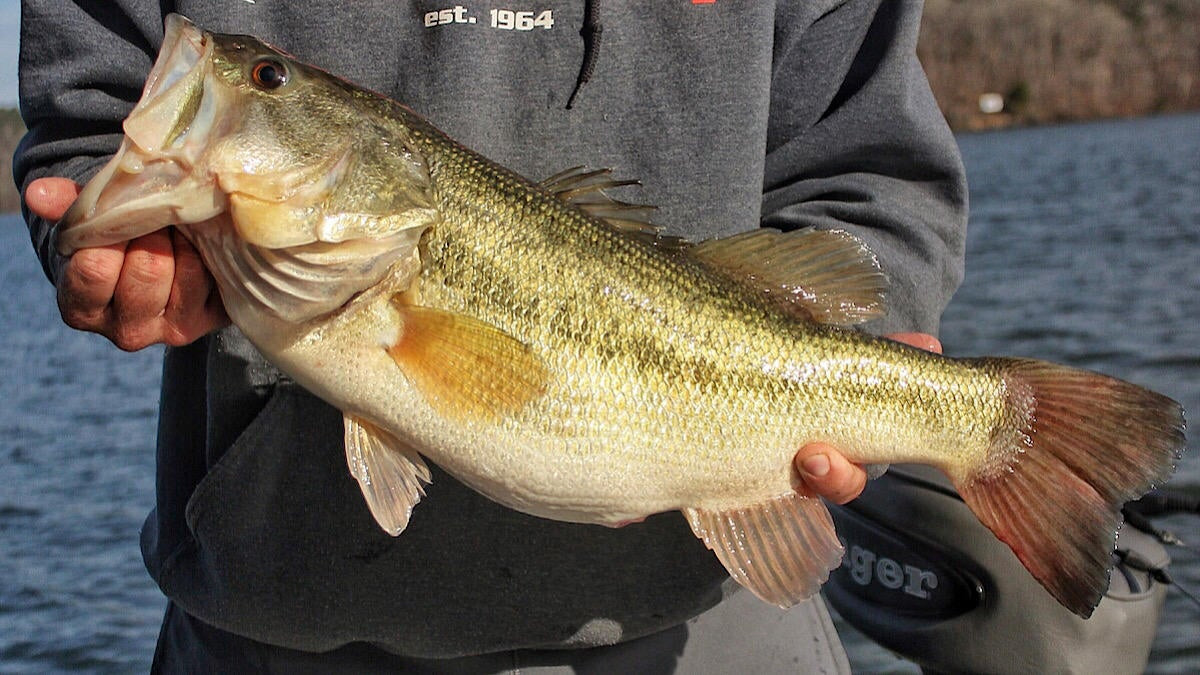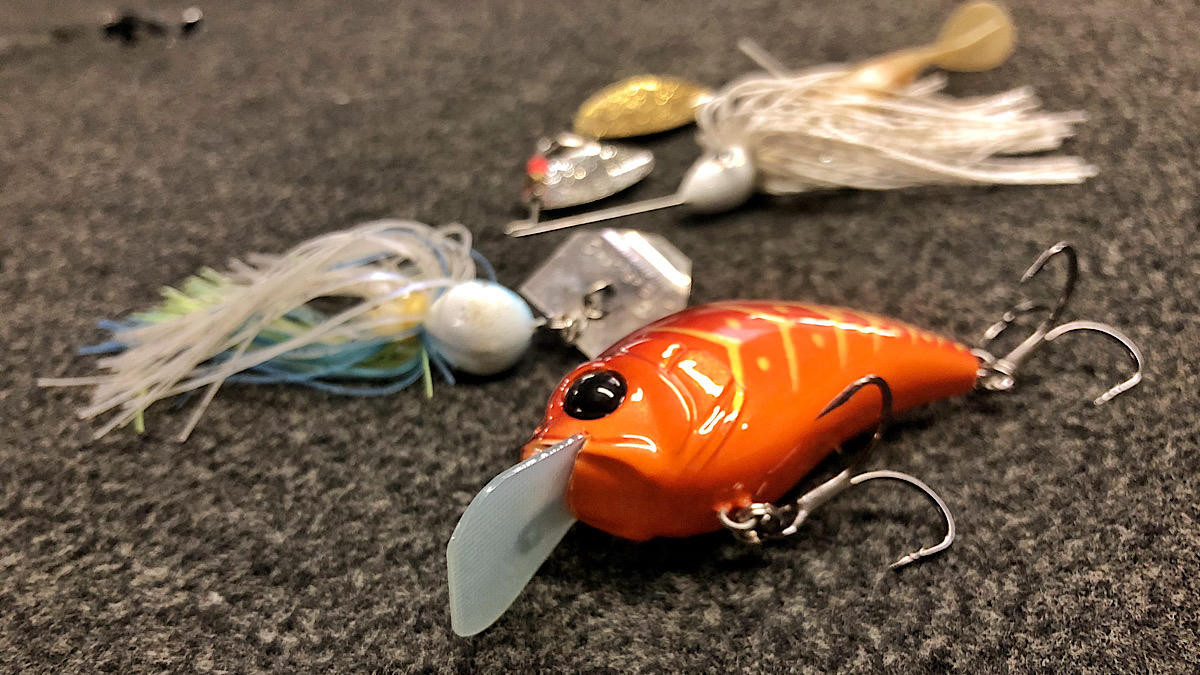With hunting season and football winding down combined with all the chaos of the last year, it would be easy for the prespawn to sneak up on some of us. Anglers to the north are probably reading this in the tone of an Allen Iverson press interview circa 2002, “Pre-spawn? We talking bout prespawn right now?” While fishermen down in Florida are eyeing big girls on bed already. But for the Bible Belt, it’s getting close to go time and it’ll be on us before you know it.
Some of you will want to focus heavily in the coming weeks on the deep water near shallow water deal; anywhere there’s a transitional, 45-degree style bank where the fish will be funneling into creeks and coves in droves as they make their way closer to the spawning flats and shallows. But these are the fish that have pulled out and wintered in the deep. There are also resident fish that stay shallow year round on a lot of fisheries. So we’ll talk about what to look for with them too, as they’ll be some of the first to jump on bed.
We’ll also help you try to break down which category the fish you will be targeting fit into. Though that’s easier said than done and not a perfect science based on fisheries. For instance, a highland reservoir sees a lot of fish transition out of the shallows during the winter and summer and then make their way back for the spring and fall. But there are also certain places on a highland reservoir, like a muddy creek for instance, where a small population of fish will stay shallow year round. So you have to take these things into consideration when choosing where you fish the prespawn.
So since it’s difficult to group the prespawn by fishery, it seems best to take a broad look at the two groups of bass instead: resident and transitional. And then we can narrow down how you target those fish on your local fishery.
Resident fish
These are my favorite bass to fish for in the prespawn and year round, for that matter. My dad and I fish in Alabama mostly now and like to stay shallow when we can, even through the dead of winter when the water temps are in the 40s and the brutal heat of summer when we’re fishing in less than two feet and the water temps break 90 degrees. The reason? There are always fish up shallow. John Cox has proven that time and time again on a national level and anglers like my dad have proven it for decades as well in all the little local circles.
But the reason I like fishing for resident fish in the prespawn in particular, is that these are the first fish to really feel the urge to spawn. The water temps will obviously change faster two feet deep than they will at 20 feet. So as the spring approaches, the first couple of warm days sandwiched between a couple nights in the 60s will be enough to push these big girls right to where they’ll be spawning and have them super aggressive, feeding and full of eggs.
To find these resident populations of fish, you’ll want to make your way up into creeks, rivers and flats. Anywhere a fish would have to travel a long way to go to significantly deeper water. I think that is one of the things that generate these populations of resident fish. The best places to find resident fish shallow throughout the year will have a good food source, preferably some fresh water coming in, an abundance of cover used to ambush prey and to shade themselves in the hot summer and as aforementioned a place where the fish would have to travel a long distance to get to deeper water.
Lakes like Eufaula down in south Alabama have stretches of flats for instance where the depth doesn’t change more than a foot for 500 yards. A larger scale example of this would be all the way down in south Florida on Lake Okeechobee where there are likely stretches with less than a foot of depth change for a quarter mile. It’s not worthwhile or practical for the fish to travel these long distances to find deeper water if they have a food source and cover readily available where they are.
And I know it seems outlandish to think a bass could rationalize this deeply and I’m not saying they do; it’s primarily instinct to survive. Bass are creatures of habit and these are literal life and death decisions for them. And the proof is in the pudding as they say, since there are schools of fish that stay shallow year round. So regardless of how they figure it out, overtime schools of fish develop a collective school of thought and stay shallow in these type places.
Targeting resident prespawn fish is pretty simple once you find them. Spinnerbaits, squarebills, vibrating jigs and lipless cranks work extremely well depending on the type of cover you’re around. And you can even get on a good topwater bite with something like a buzzbait if there’s a warming trend. Flipping and skipping jigs also work well around docks and wood. Basically it gets back to the nuts and bolts of fishing. Fish will hang tight to cover and are typically susceptible to power fishing techniques. Though on high pressure days and in clear water, shallow finesse tactics like Neko rigging and wacky rigs can work wonders at unlocking a prespawner’s jaw.
Transitional fish
Now we’re talking fish that are on the move. But ironically, the best places to fish for them will be stationary. What I mean by that is that I don’t like to go out and move around with a particular school of fish with something like a spybait as they move into the prespawn stage. Instead, find one large piece of hard cover like a bridge, 45-degree bank or channel swing and then let the fish come to and by you as they make their way into the spawning areas. Multiple schools of fish will use the same highways and this way you can catch fish in the same areas for weeks and months as they move in and back out from the spawn.
The key is finding deep water near shallow water. Somewhere the fish can set up, feed and then push shallow to spawn as soon as the urge hits them. There are several lakes like this that I frequent here in Alabama where these fish are the ones you really want to focus on. But the most textbook bite I ever got on like this came on Kentucky Lake in the 2011 FLW College Fishing National Championship.
Get ready for a name drop.
None other than the famed Jordan Lee and I were fishing together for Auburn University and we found a couple banks like this headed back into large bays off the main lake. Each had a small creek channel that weaved its way into the pocket. The places where those channels came right up next to the bank were the deal. And one in-particular held 80 to 90 percent of the fish we weighed in that week to inevitably finish 3rd. That’s the bank you see in the picture above, a perfect example of what to look for.
You’ll notice in that picture also that we were sitting close to the bank paralleling it with our baits. We caught our fish that week on 1/4-ounce shaky heads with NetBait Mini Kickin’ Bs and finesse jigs with the same bait as a trailer. We didn’t parallel the bank all the time, however. When you find a place like this with a concentration of fish, it’s a good idea to make several passes from different angles. The best part of that stretch was about 100 yards long, with a few bites coming within 50 more yards of either side of it. We would make our way down that stretch sitting a good cast away throwing perpendicular to the bank and then make another pass up tight throwing straight down the bank. Then we’d make another pass up tight to the bank throwing out into the deeper water and dragging our baits up. We got bit doing all of these things.
Other baits that work extremely well fishing for prespawn bass in these type places are jerkbaits, swimbaits and umbrella rigs if allowed. Those baits are all better suited though for fish that are suspending. What you’ll often find with areas like this is that on certain days, the fish are suspended and on other days they are holding tight to the bottom or boulders and laydowns along the banks. The two factors that seem to influence this shift the most are water clarity and current. If the water is clearer and slack, the fish will often suspend. More current and color and the fish will head to the bottom where they have a better chance of cornering a meal.
In conclusion
To put it simply, fish will be all over the place in the coming weeks and months. The prespawn really scatters fish out but also groups them back together. There will be windows where most of the transitional fish in your area are on the move and most of the resident fish are either in the mood to spawn or not. It can happen quick up shallow and be over with, so one week you might wreck them in an area and the next not get a bite.
On the other hand, some fish using these transitional highways may make their way all the way back to the backs of these pockets and creeks to spawn, while others may just pull up to the channel swing bank and spawn by a log or on a shelf. Even then, others are likely to jump up on the bank and spawn anywhere in between. The key is putting yourself in the best situation to get bit based on the current conditions. If you time it right, you can catch the resident fish shallow first and then fall back to the transitional fish that are tagging right along behind them.
Regardless of which group of fish you choose to target, the prespawn is the best time of year to catch the most big fish. They are fat and aggressive and fun to tie into. Just don’t let the prespawn sneak up on you and pass right by. It’s time to go get after them.















